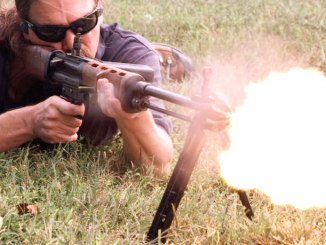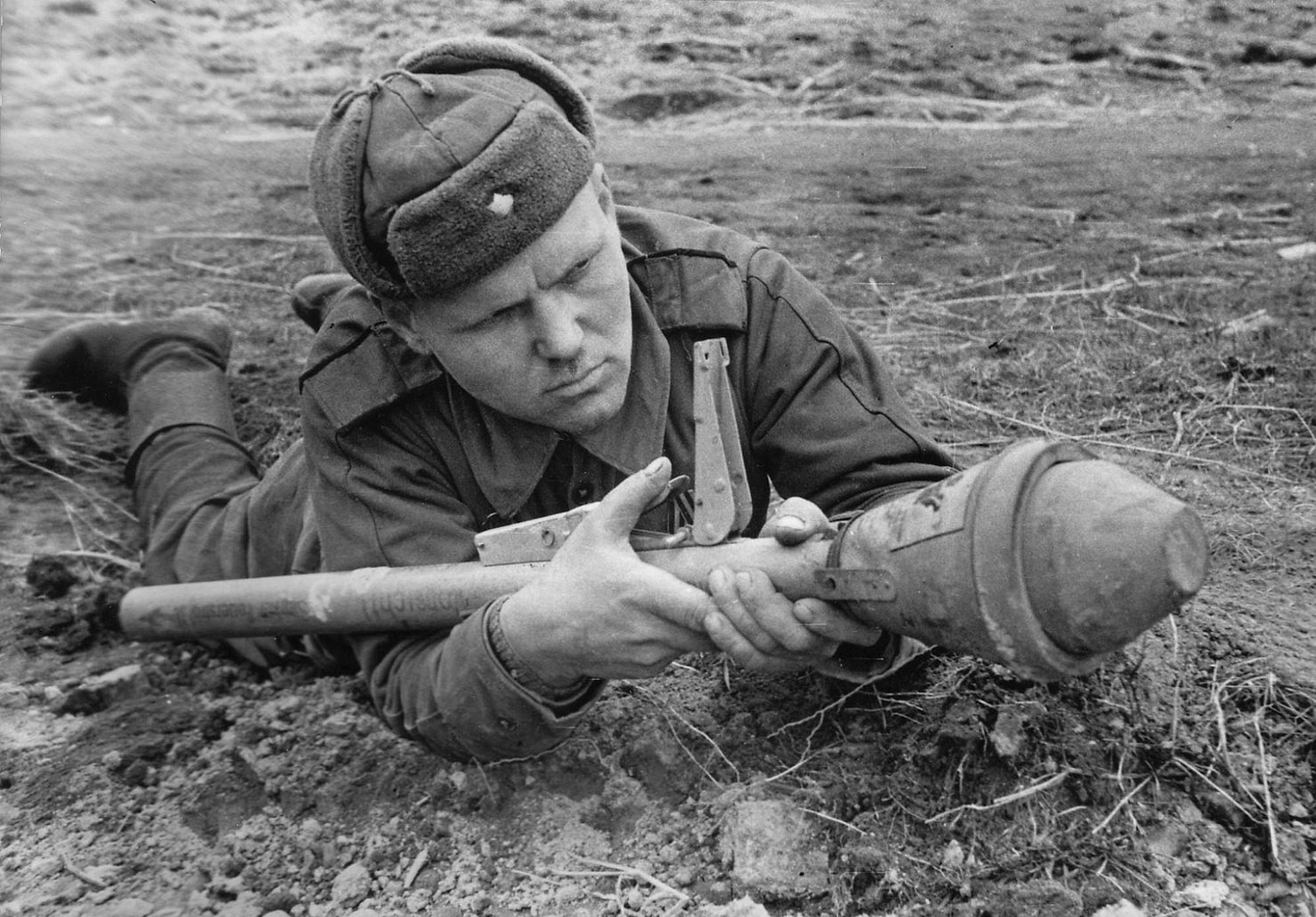Over the next couple weeks we will be looking at several Polish firearms, and the first one is today: the G29/40. When German forces overran the arms factory in Radom, Poland, they captured in nearly completely intact. One of the guns being produced there had been the wz. 29; a Polish version of the K98k Mauser. The guns were so similar that the German occupation administration put the Steyr company in control of the plant and restarted production to use the parts that were already on hand.
The resulting rifles were designated G29/40 (29 from the Polish designation and 40 from the year German production began). They were in every way the equal of German K98k rifles, but still officially 2nd tier rifles because of their foreign origin. As a result, they were issued to branches of the German military which did not typically have high priority for new small arms, like the Kriegsmarine and Luftwaffe. There are several versions with different markings, which we will discuss in the video…




“several Polish firearms”
Some history is needed to understand development of firearms in Poland.
Before end of 18th century Poland was independent, but as a effect of Partitions of Poland it fall under occupation – west part was occupied by Prussia, south by Austria and east by Russia. Polish people tried several times get independence (Kościuszko Uprising in 1790s, as Napoleon ally in 1810s /google: prince Józef Poniatowski/, November Uprising 1830-31, Greater Poland Uprising 1848, January Uprising 1863-64) but all failed until finally Poland gets independence in 1918 (over 100 year of occupation!) as aftermath of WW1.
–
During WW1 Polish men were enlisted to occupant’s armies, when Poland emerged as independent state, they became Polish Army, but as they were equipped by occupants their uniforms and weapons varied greatly, also there was also Haller’s Army fighting as France ally (in WW1) and using French equipment which added further weapons types. Poland managed to win Polish-Soviet, despite rifle (and cartridges) grab-bag. It was clear that common rifle and cartridge is needed, as Poland gets Royal Arms Factory of Danzig machinery (Mauser 98 system) as part of war reparations it become (with 7.9×57) Polish standard
—
“They were in every way the equal of German K98k rifles, but still officially 2nd tier rifles because of their foreign origin.”
When I have no evidence I suspect that in fact K98k was influenced by Polish karabinek wz. 29 as Polish carbine was created earlier (1929 against 1935)
“rifle (and cartridges) grab-bag”
So far I know, besides current default military rifles of Germany/Austria-Hungary/Russia and that used by Haller’s Army, Polish forces after WW1 acquired:
6.5mm Arisaka Type 30 and Type 38 (ex-Russian)
6.5mm Mannlicher 1893 (ex-Austrian-Hungarian, ex-ex-Romanian)
6.5mm Carcano 1891 (ex-Italian, surplus)
7.62mm Winchester 1895 (ex-Russian)
7.65mm Belgian Mauser 1889 (source unclear: Belgian surplus or from German trophy-of-war)
7.7mm Enfield 1914 (American surplus and from Bolshevik trophy-of-war from British intervention)
7.9mm Mauser 1888 (ex-German)
7.9mm Turkish Mauser 1890 (source unclear, probably from Russian trophy-of-war from Turkey in WW1)
10mm Vetterli-Vitali 1870/87 (ex-Italian, surplus)
11mm Berdan 1868 and 1870 (ex-Russian)
11mm Werndl-Holub 1873/77 (ex-Austrian-Hungarian)
11mm Mauser 1871 (ex-German)
And thus it is remarkable that Poland managed to get itself together in time to kick the Soviets in the rear… Or am I wrong?
The new Soviet Union really didn’t bother Poland much from 1918 to 1939. From 1918 to 1926, they were too busy with the civil war, and later were more concerned with Finland.
Even before the Molotov/Ribbentrop “alliance of convenience”, it was understood that Germany would hit Poland from the western side first, and Russia would “take back their historic territory” east of the line from East Prussia through Warsaw south to the Czech border.
This “understanding” predated Hitler & Co., BTW, along with German air and armor unis training in Russia with Stalin’s approval in exchange or German military technology. Russian armor was broadly based on a combination of American Christie and British Vickers concepts, but their military aircraft, and their rather few submarines, were mostly based on German concepts. (MiG-1-3 were largely similar to Messerschmitt Bf-109, Lavochkin fighters were much like Focke-Wulf, etc.)
When the Wehrmacht entered Poland on 1 Sept 1939, the Red Army waited until the Polish Army had been largely destroyed by the Germans before invading from the east, because that was the plan going back at least a decade. Agreed upon with the Reichswehr general staff, not Hitler.
It may have been the only time in the war that Hitler and Stalin actually listened to their generals, and let them run the show their way.
cheers
eon
“The new Soviet Union really didn’t bother Poland much from 1918 to 1939.”
No, the Polish-Bolshevik War was decisive for Poland, it win and stay independent, if loss then it would probable become another Soviet Republic, which would also influence fate of Germany, which could probably become communist too.
Battle of Warsaw (1920) was important point of history, as it forced Soviet forces to retreat, however it don’t end fights.
Viscount D’Abernon wrote The Eighteenth Decisive Battle of the World: Warsaw, 1920, it was also included in J.F.C.Fuller’s book The Decisive Battles of the Western World (Vol. 3)
When no match in terms of soldiers involved for great battles of WW1, it has big influence at Europe history, citing http://www.hetmanusa.org/engarticle1.html
Poland stopped on itself the full brunt of the Red Army and defeated an idea of the “export of the revolution.” Communist time table was slowed 24 years and countries of the Central Europe were spared from communist rule for a quarter of a century. Western Europe, where revolutionary fever was boiling over on the streets, was spared a bloody fight for survival.
The similarity of the MiG-1/3 and later Lavochkins (from La-5) to German designs was superficial and had nothing to do with the German co-operation, which had ended before those fighters were designed. In fact the Polikarpov I-16, which entered service in 1935, was more advanced than any German fighter prior to the Bf 109. The Soviet fighter engines were developments of the French Hispano-Suiza 12Y (Klimov VK-100 series) and Wright R-1820 Cyclone (Shvetsov M-25, M-62, ASh-82 etc.), again with no connection to German designs. The Mikulin in-line engines (e.g. AM-35 in MiG-3 etc.) were mostly a domestic design, even if their lineage could be traced back to the BMW VI.
” French Hispano-Suiza 12Y (Klimov VK-100 series) and Wright R-1820 Cyclone (Shvetsov M-25, M-62, ASh-82 etc.)”
So far I know Soviet engine development, in first part of Great Patriotic War lagged behind German, so Soviet plane-design philosophy was building as light (small) aeroplane as possible around available engine, to get enough good horse-power-to-mass ratio.
That is true, although the Bf 109 and Fw 190 were also designed to be small and relatively light. There wasn’t much difference in the weights of the Bf 109G, Yak-7B or Yak-9 (all 1942 designs), for example. The Bf 109G did have significantly more power, though, which contributed to its superiority in vertical maneuvers. The Soviet fighters, on the other hand, tended to have lower wing loadings and therefore better maneuverability on the horizontal plane.
Both were very likely influenced by the earlier Kar 98b, which was itself basically a German “analogue” of the British SMLE.
The U.S. Springfield 1903 was a similar “short rifle” intended to replace the dichotomy of long rifles for infantry and short carbines for artillery and cavalry with a single “universal” rifle for all branches.
cheers
eon
The factory in Radom, Poland is called Fabryka Broni “Lucznik”. In the 1930s the chief engineer in control was Kazimierz Oldakowski, who installed health care, child daycare, gymnasiums, all the employee benefits one would want.
The invading Germans took a first class operation.
Poles, as usual, missed the PR potential – Radom is easier to pronounce (and read) to the Western eyes than Łucznik, pron.”woo-ch-nick” (even though the latter means ‘a bowman’).
Regards, Andrzej
It’s more like calling Enfields… Enfields.
Or Springfields… Springfields.
Hey Ian,
This has been bugging me for a while. It is not pronounced “Ray-dahm” it is pronounced “Rah-dohm”
Mother Polska will thank you.
Fun fact, apropos of nothing;
In Jean-Luc Godard’s 1965 science fantasy movie Alphaville, Eddie Constantine (as Lemmy Caution) is supposedly using a Colt .45 automatic. But if you look closely, it’s actually a Vis.35 “Radom” 9 x 19mm. The hammer drop lever on the left rear of the slide is very obvious.
cheers
eon
Also in Kelly’s Heroes, together with Polish wz.28 BAR.
For usage of Vis wz. 35 in movies see:
http://www.imfdb.org/wiki/Vis_wz._35_Radom_pistol
BTW: In Poland it was never called RADOM PISTOL
And what did you expect in a movie filmed in (then) Yugoslavia ?
There were 1911s available (still in non-obsolete section of official arms listing in 1985) but I guess it was a problem with blanks, same reason Holywood used 9mm Star pistols instead of 1911s.
There are also examples of captured WZ 29 rifles that were converted to G29/40 rifles but have mis matched bolts. This was due to Polish military SOP’s in case the rifle is to be lost, the bolt was to be removed and discarded thus the enemy would not get a functional rifle.